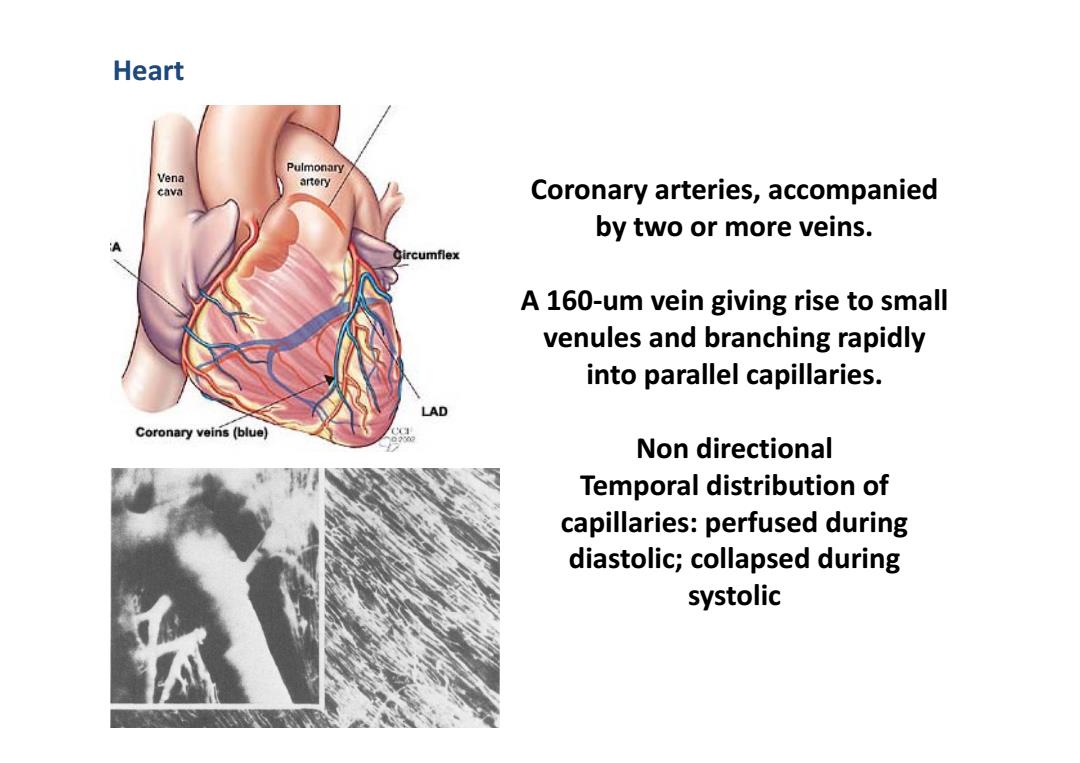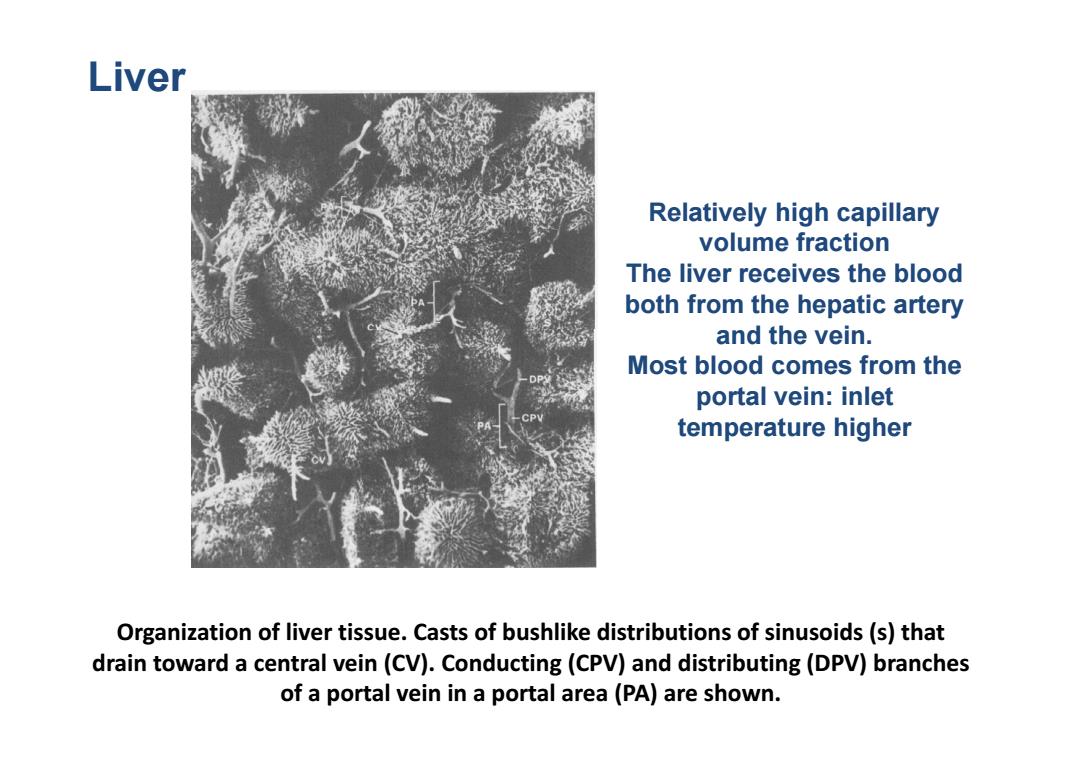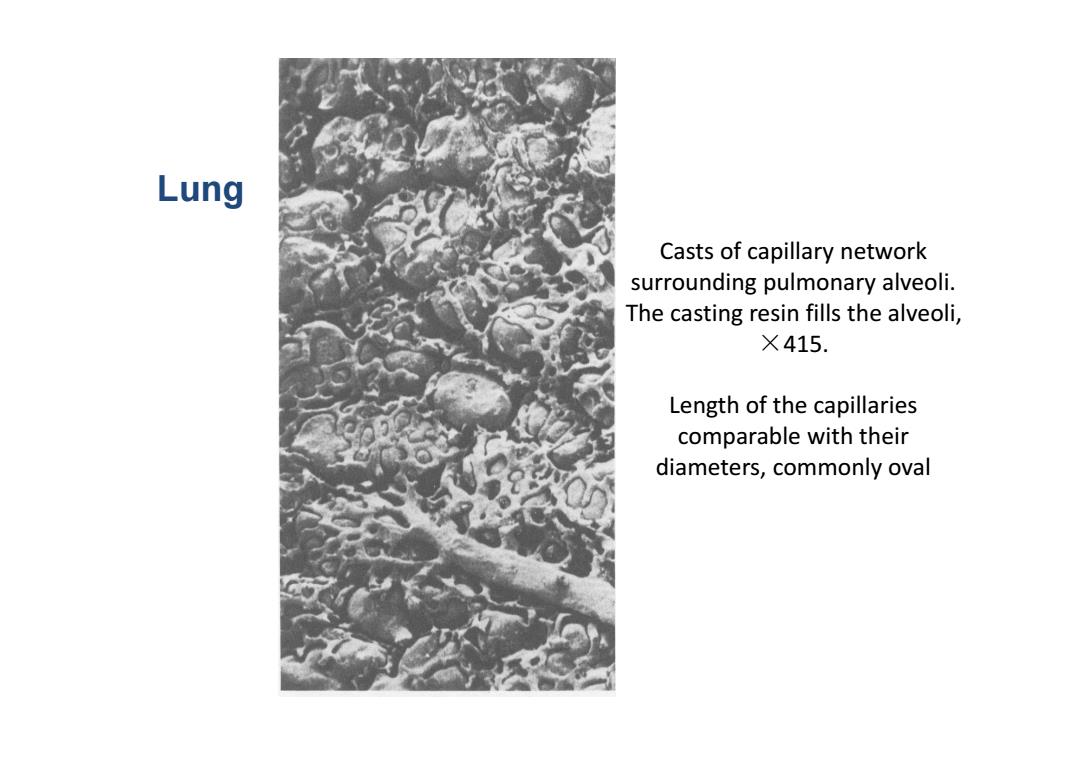
Vasculature and thermoregulation
Vasculature and thermoregulation

Study of Microvasculature To supply nutrients through circulatory network system in biological body To regulate the body temperature and organ function through shunting mechanism for blood re-distribution
Study of Microvasculature To supply nutrients through circulatory network system in biological body To regulate the body temperature and organ function through shunting mechanism for blood re‐distribution

Anatomy and Description of Microvasculature
Anatomy and Description of Microvasculature

Skeletal Muscle Major branches of arteries in skeletal muscle run parallel to muscles; No paired arteriols and venules at the pre- capillary level 。Capillaries
• Major branches of arteries in skeletal muscle run parallel to muscles; • No paired arteriols and venules at the pre‐ capillary level • Capillaries Skeletal Muscle

Casts of muscle vasculature viewed by SEM.Rat skeletal muscle, X 60.BV:blood vessel.CP:capillary plexus
Casts of muscle vasculature viewed by SEM. Rat skeletal muscle, ×60.BV:blood vessel. CP: capillary plexus

Casts of muscle vasculature viewed by SEM.Higher magnification of CP X330.Arrows:transverse capillary loops
Casts of muscle vasculature viewed by SEM. Higher magnification of CP, ×330. Arrows: transverse capillary loops

Heart Pulmonary Vena artery cava Coronary arteries,accompanied by two or more veins. Circumflex A 160-um vein giving rise to small venules and branching rapidly into parallel capillaries. LAD Coronary veins(blue) Non directional Temporal distribution of capillaries:perfused during diastolic;collapsed during systolic
Coronary arteries, accompanied by two or more veins. A 160 ‐um vein giving rise to small venules and branching rapidly into parallel capillaries. Non directional Temporal distribution of capillaries: perfused during diastolic; collapsed during systolic Heart

Liver Relatively high capillary volume fraction The liver receives the blood both from the hepatic artery and the vein. Most blood comes from the portal vein:inlet temperature higher Organization of liver tissue.Casts of bushlike distributions of sinusoids(s)that drain toward a central vein(CV).Conducting(CPV)and distributing(DPV)branches of a portal vein in a portal area(PA)are shown
Organization of liver tissue. Casts of bushlike distributions of sinusoids (s) that drain toward a central vein (CV). Conducting (CPV) and distributing (DPV) branches of a portal vein in a portal area (PA) are shown. Liver Relatively high capillary volume fraction The liver receives the blood both from the hepatic artery and the vein. Most blood comes from the portal vein: inlet temperature higher

Lung Casts of capillary network surrounding pulmonary alveoli. The casting resin fills the alveoli, ×415. Length of the capillaries comparable with their diameters,commonly oval
Casts of capillary network surrounding pulmonary alveoli. The casting resin fills the alveoli, ×415. Length of the capillaries comparable with their diameters, commonly oval Lung

Skin Upper dermis Endothelium I5μ discontinuous 15μ smooth muscle 40-60μ Endothelium Smooth muscle single loyer 50r Mid-dermis 50μ Thick endothelium Collagen Few loyers of loose elastic tissue 00-4004 smooth muscle Endothelium Deep dermis with ill defined elostic Internol elastic lamina Smooth muscle Artery several layers Vein Diagram of most frequent vascular pattern and structure in adult human skin
Diagram of most frequent vascular pattern and structure in adult human skin. Skin